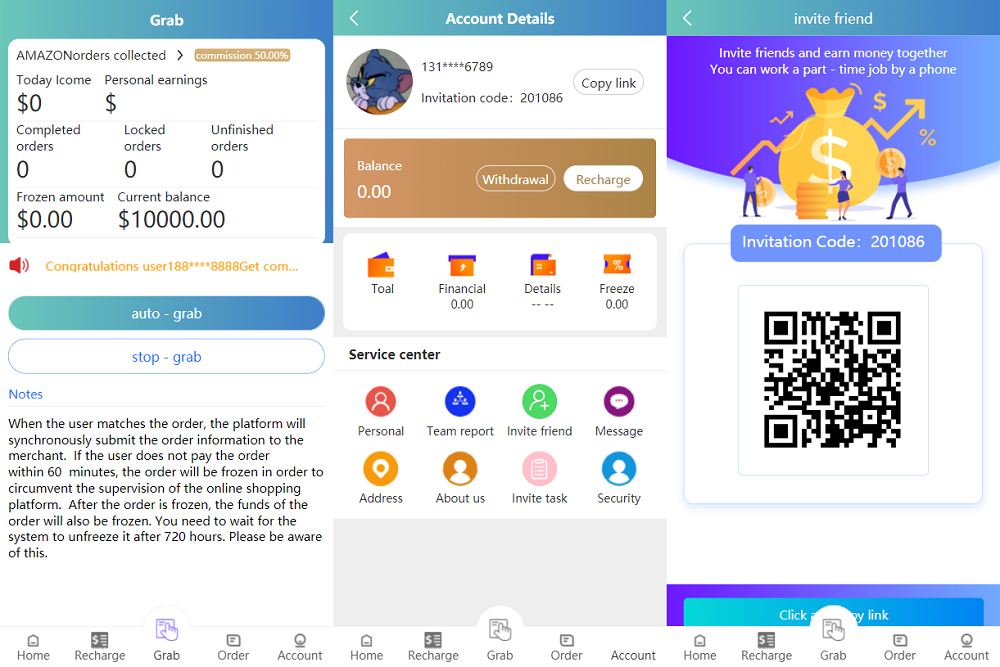【网站渗透】漏洞检测方法
In the modern digital landscape, cybersecurity has become a paramount concern for organizations and individuals alike. With the ever-evolving threat of cyberattacks, identifying vulnerabilities in websites is crucial to maintaining data security and operational integrity. This article explores the techniques, tools, and strategies involved in 【网站渗透】漏洞检测方法.
---
Understanding Vulnerability Assessment in Web Penetration
Vulnerability detection, also referred to as vulnerability assessment, involves identifying weaknesses or security gaps in a website's architecture, code, or configuration. This process is an essential step in the broader practice of penetration testing. By identifying potential entry points for attackers, security professionals can mitigate risks and fortify a website's defenses.
Why Is Vulnerability Detection Important?
- Proactive Defense: Detecting vulnerabilities before they are exploited prevents data breaches, unauthorized access, and potential financial losses.
- Compliance: Many industries have regulations that require regular vulnerability assessments to ensure data protection.
- Reputation Management: A compromised website can damage an organization's reputation and erode customer trust.
---
Methods Used in 【网站渗透】漏洞检测方法
Various methods are employed to uncover vulnerabilities during website penetration testing. These techniques can be categorized into manual and automated approaches.
1. Automated Vulnerability Scanning
Automated tools play a significant role in identifying vulnerabilities quickly and efficiently. These tools are designed to scan web applications and servers for known security flaws.
- Popular Tools:
- OWASP ZAP (Zed Attack Proxy): An open-source tool for finding vulnerabilities in web applications.
- Nessus: A widely used scanner that detects misconfigurations, missing patches, and more.
- Burp Suite: A comprehensive toolkit for web application security testing.
- Acunetix: Specializes in identifying SQL injection, XSS, and other web vulnerabilities.
- Advantages:
- Speed: Automated tools can scan large applications in minutes.
- Consistency: They follow predefined rules and do not miss common vulnerabilities.
- Limitations:
- False Positives: Automated scans may flag issues that are not genuine threats.
- Limited Scope: Some vulnerabilities require manual analysis to identify.
---
2. Manual Testing
While automated tools are efficient, manual testing provides a deeper understanding of a website's security posture. Manual methods often uncover logical flaws and complex vulnerabilities that automated tools might overlook.
- Key Techniques:
- Code Review: Examining source code for insecure coding practices.
- Fuzzing: Sending unexpected inputs to a web application to trigger errors.
- Injection Testing: Identifying SQL, command, or LDAP injection vulnerabilities.
- Authentication Testing: Evaluating the strength of login mechanisms and access controls.
- Advantages:
- Precision: Manual testing reduces the occurrence of false positives.
- Expertise-Driven: Allows testers to think creatively like potential attackers.
- Limitations:
- Time-Consuming: Manual testing takes longer than automated scans.
- Requires Expertise: It demands skilled professionals with experience in penetration testing.
---
Steps in Conducting 【网站渗透】漏洞检测方法
Performing vulnerability detection involves a systematic approach to ensure all potential weaknesses are identified and addressed. Below are the primary steps involved:
1. Information Gathering
Before testing, gather detailed information about the target website. This includes identifying technologies in use (e.g., CMS, frameworks) and understanding its architecture.
- Tools Used: Nmap, Wappalyzer, Netcraft.
2. Vulnerability Identification
Using a combination of automated tools and manual techniques, identify vulnerabilities such as:
- SQL Injection
- Cross-Site Scripting (XSS)
- Cross-Site Request Forgery (CSRF)
- Broken Authentication and Session Management
3. Exploitation Simulation
Attempt to exploit identified vulnerabilities to understand their potential impact. This step is crucial for prioritizing which issues to address first.
4. Reporting and Mitigation
Compile a comprehensive report detailing discovered vulnerabilities, their severity, and remediation steps. Ensure clear communication with developers and stakeholders for effective resolution.
---
Best Practices for Effective Vulnerability Detection
When implementing 【网站渗透】漏洞检测方法, adhering to best practices ensures thorough and reliable results.
1. Regular Testing:
- Perform assessments frequently to keep up with evolving threats.
- Schedule scans after major website updates or changes.
2. Combine Automated and Manual Approaches:
- Use automated tools for initial scans and manual testing for deeper analysis.
3. Update Tools and Databases:
- Ensure tools are updated with the latest vulnerability databases.
4. Follow Established Frameworks:
- Use guidelines like OWASP Top Ten to focus on the most critical vulnerabilities.
5. Engage Skilled Professionals:
- Work with experienced penetration testers to maximize testing effectiveness.
---
Common Challenges in 【网站渗透】漏洞检测方法
Despite its importance, vulnerability detection comes with its own set of challenges:
- Resource Constraints: Limited budgets or time can hinder comprehensive testing.
- Evolving Threat Landscape: New vulnerabilities emerge frequently, requiring continuous learning.
- False Positives: Automated tools may generate irrelevant alerts, complicating the analysis.
---
Emerging Trends in Web Penetration Testing
As the field of cybersecurity evolves, so do the methods and tools used in vulnerability detection. Key trends include:
1. AI and Machine Learning:
- Leveraging AI to predict and identify vulnerabilities more accurately.
2. DevSecOps Integration:
- Embedding security practices into the software development lifecycle.
3. Cloud Security Focus:
- Addressing vulnerabilities in cloud-hosted applications and services.
4. Bug Bounty Programs:
- Encouraging ethical hackers to identify and report vulnerabilities in exchange for rewards.
---
Conclusion
【网站渗透】漏洞检测方法 is a critical aspect of ensuring website security in today's digital era. By employing a mix of automated tools and manual expertise, organizations can proactively identify and address vulnerabilities before malicious actors exploit them. Regular testing, adherence to best practices, and staying informed about emerging trends are key to maintaining a secure online presence. With a robust vulnerability detection strategy in place, businesses can safeguard their data, operations, and reputation effectively.

